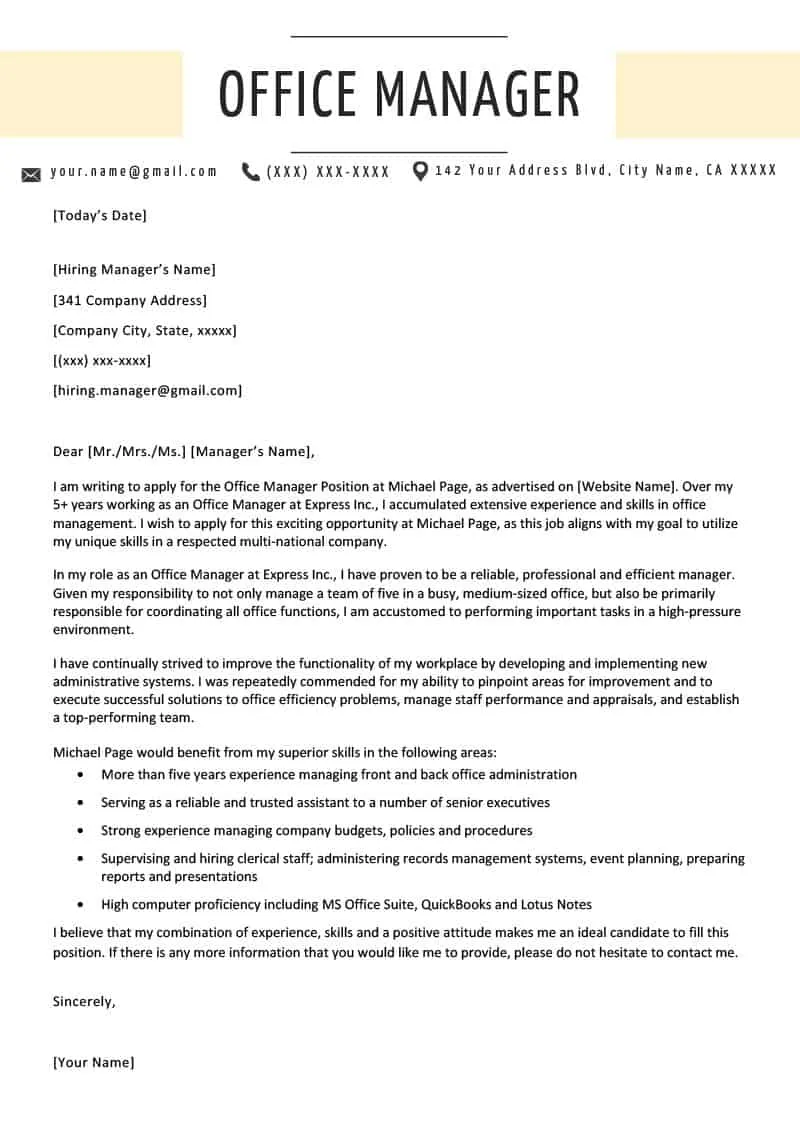What is a Resume Cover Letter
A resume cover letter is a crucial document accompanying your resume when applying for a job. It serves as your first introduction to a potential employer, allowing you to provide context to your resume and express your interest in the specific position. Unlike the resume, which is a factual summary of your skills and experience, the cover letter gives you the opportunity to showcase your personality, writing skills, and enthusiasm for the role. It’s a chance to tell a story about why you’re the perfect fit for the job and the company. It helps you to make a personal connection with the hiring manager and sets the stage for a positive first impression. A well-written cover letter can significantly increase your chances of getting an interview, while a poorly written one can be a deal-breaker.
Why Do You Need a Cover Letter
In today’s competitive job market, a cover letter is not just an optional extra; it’s a necessity. It provides an opportunity to distinguish yourself from other applicants and highlight how your skills and experience align with the specific job requirements. A cover letter allows you to elaborate on your accomplishments and explain how you can contribute to the company’s success. Many employers expect a cover letter, and not submitting one can signal a lack of attention to detail or a lack of genuine interest in the position. Moreover, a cover letter demonstrates your communication skills, which are essential in almost every professional role. It allows you to express your personality and show the hiring manager that you’re more than just a list of qualifications on a piece of paper. Therefore, it’s an important part of the job application process.
Essential Components of a Cover Letter
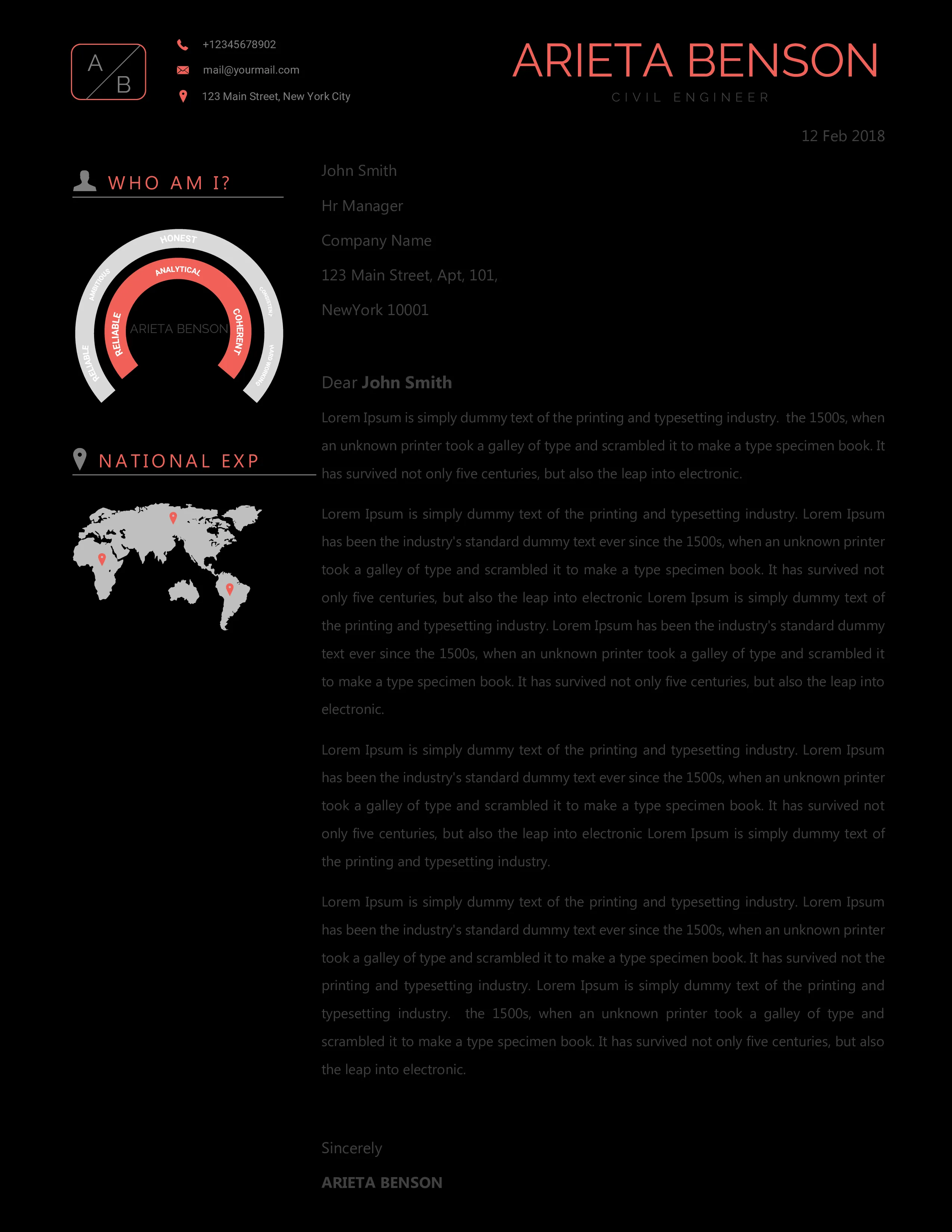
A well-structured cover letter includes several key components that work together to present you as a strong candidate. Each section plays a vital role in communicating your value to the employer. This includes your contact information, the hiring manager’s details, a professional salutation, a compelling opening, highlights of skills and experience, relevant accomplishments, and a strong closing. These elements create a cohesive narrative that makes a lasting impression. Properly formatting and organizing these components ensures clarity and professionalism, making it easier for the hiring manager to understand why you’re the best fit for the role. A cover letter also allows you to showcase your writing skills, attention to detail, and your understanding of the company’s needs.
Your Contact Information
At the top of your cover letter, include your full name, phone number, email address, and optionally, your LinkedIn profile URL or personal website. This ensures the hiring manager can easily contact you. Use a professional email address and ensure all contact details are up-to-date. The inclusion of your contact information is an important part of creating a professional document.
The Hiring Manager’s Contact Information
If possible, address your cover letter to a specific person. Research the hiring manager’s name and title and include their information below your contact details. This personal touch demonstrates your initiative and attention to detail, making your application stand out. If you can’t find a specific name, use a general title such as ‘Hiring Manager’ or ‘Recruiting Team’.
The Salutation
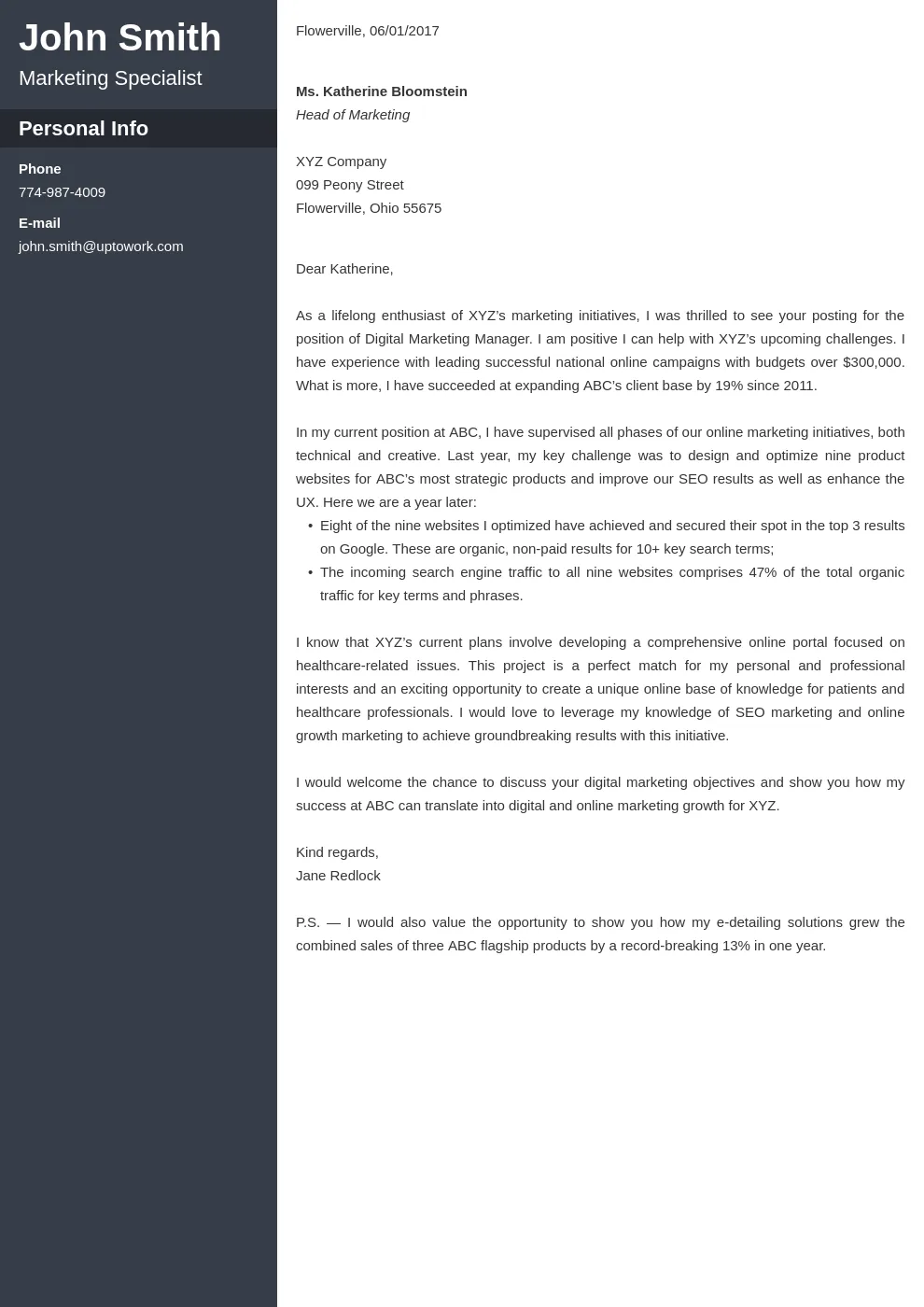
Use a professional salutation, such as ‘Dear Mr/Ms/Mx. [Last Name]’. If you don’t know the name, opt for a generic greeting, such as ‘Dear Hiring Manager’ or ‘Dear [Company Name] Team’. Avoid informal greetings like ‘Hey’ or ‘Hi’, as they can undermine your professionalism. Ensure you spell the recipient’s name correctly. It’s important to create a good first impression.
Crafting a Compelling Opening Paragraph
The opening paragraph is your chance to grab the hiring manager’s attention. State the position you’re applying for and how you learned about it. Briefly mention why you are interested in the role and the company. Consider adding a compelling hook, such as a brief statement about a relevant accomplishment or a skill. Make the opening concise, enthusiastic, and tailored to the specific job. This is your chance to introduce yourself and make a strong first impression, setting the tone for the rest of the letter. The first impression is very important.
Highlighting Your Skills and Experience
The body of your cover letter should focus on how your skills and experience align with the job requirements. Analyze the job description and identify the key skills and qualifications the employer is seeking. Provide specific examples of how you have demonstrated these skills in previous roles. Use action verbs to describe your accomplishments and quantify your achievements whenever possible. Tailor your examples to the specific needs of the employer, showing them that you understand their requirements and can contribute to their success. Focus on the most relevant skills.
Tailoring Your Cover Letter to the Job Description
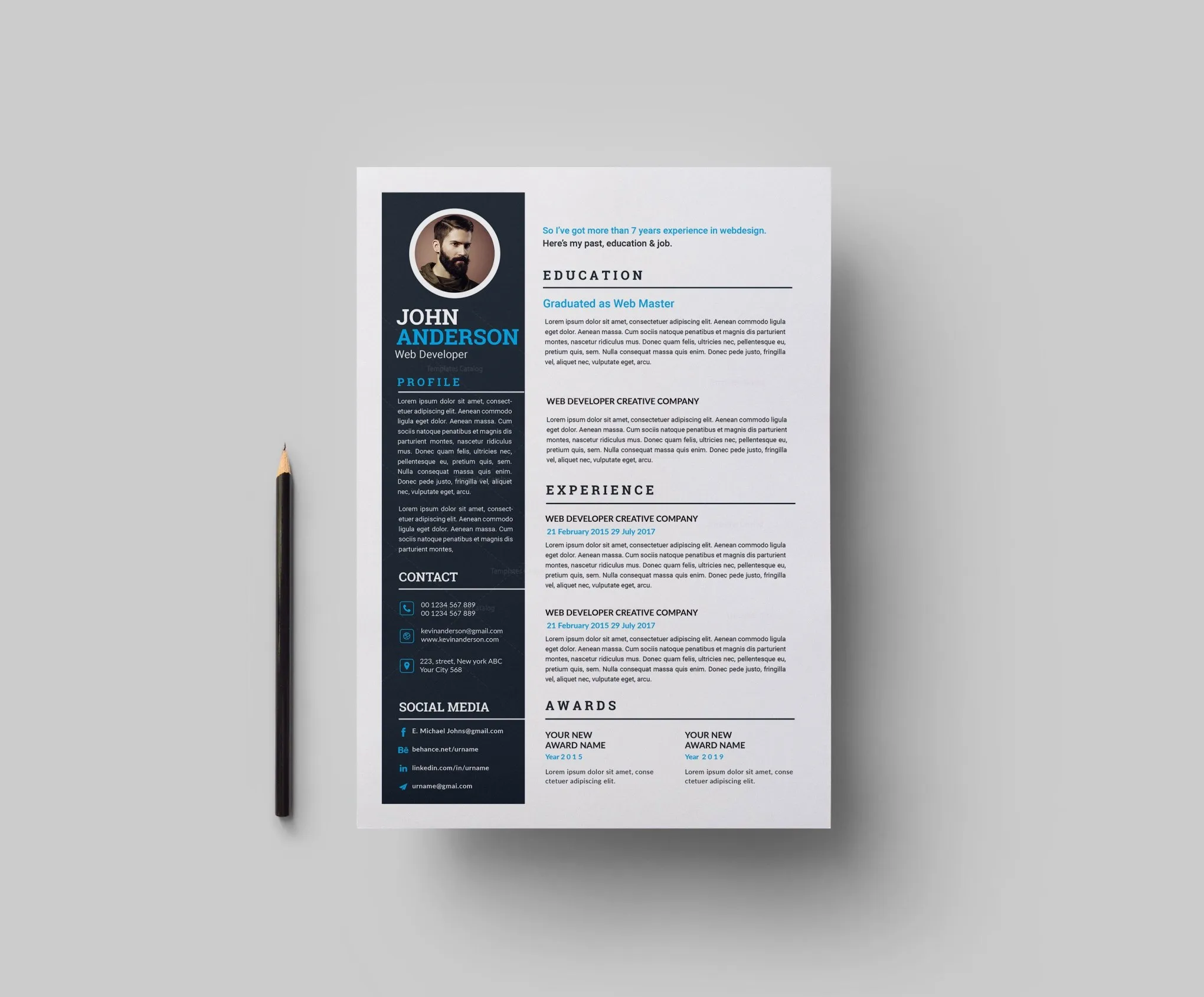
Each cover letter should be customized to the specific job you’re applying for. Review the job description carefully and identify the key requirements. Highlight the skills and experiences that match these requirements. Use the same keywords and phrases from the job description in your cover letter. This shows the hiring manager that you understand the role and have the necessary qualifications. This also helps you to pass through applicant tracking systems (ATS), which scan resumes and cover letters for relevant keywords. Avoid sending a generic cover letter; customization demonstrates your genuine interest in the position and the company. Tailoring your content to the specific needs of the employer shows your attention to detail.
Showcasing Achievements and Quantifiable Results
Instead of just listing your responsibilities, use the body of your cover letter to showcase your achievements. Provide concrete examples of how you have made a positive impact in previous roles. Quantify your results whenever possible by using numbers, percentages, or specific metrics. For instance, instead of saying you ‘managed social media,’ say you ‘increased social media engagement by 30% in six months.’ Use the STAR method (Situation, Task, Action, Result) to structure your examples. Clearly explain the situation, describe the task you undertook, outline the actions you took, and highlight the results you achieved. This provides concrete evidence of your abilities and demonstrates your value to the employer.
Addressing the Employer’s Needs
Focus on what you can do for the employer, not just what you want. Research the company and understand its goals, values, and challenges. In your cover letter, explain how your skills and experience can help the company achieve its objectives. Demonstrate your understanding of the industry and the specific role. Show the hiring manager that you’ve thought about how you can contribute to their team and make a difference. Addressing the employer’s needs makes you appear as a proactive and valuable candidate.
Structuring the Body Paragraphs
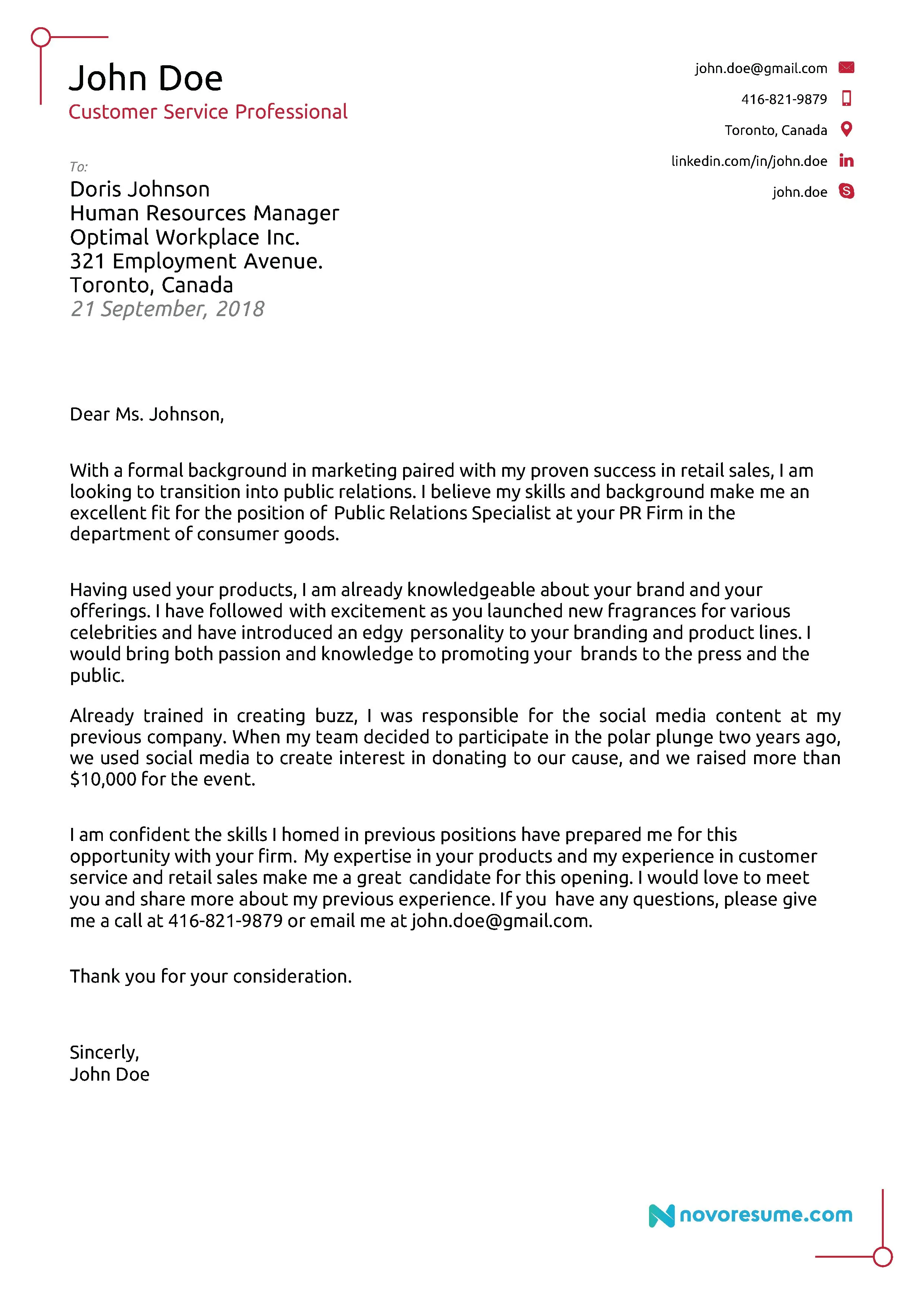
Organize the body of your cover letter into well-structured paragraphs. Each paragraph should focus on a specific aspect of your qualifications and how they align with the job requirements. Use clear topic sentences to introduce each paragraph and transition smoothly between ideas. The structure of your paragraphs should be clear and concise. Keep the paragraphs concise and avoid overly long sentences or complex language. Break down complex information into easy-to-understand chunks. Make your cover letter easy to read and navigate. A logical structure makes it easy for the hiring manager to quickly grasp your key qualifications.
Writing a Strong Closing Paragraph
The closing paragraph is your final opportunity to leave a lasting impression. It should summarize your key qualifications and reiterate your interest in the position. Express your enthusiasm for the opportunity and the company. Include a call to action, such as requesting an interview or indicating your availability for a follow-up conversation. Thank the hiring manager for their time and consideration. Keep the closing concise and professional. The closing paragraph needs to summarize your key takeaways and make a lasting impression.
Expressing Enthusiasm and Gratitude
Show genuine enthusiasm for the opportunity and express your gratitude for the hiring manager’s time and consideration. Make it clear that you are excited about the prospect of joining the company and contributing to its success. Expressing gratitude at the end of your letter creates a positive impression and leaves a memorable impression. Show your excitement in a professional way. Avoid sounding overly eager.
Call to Action Requesting an Interview
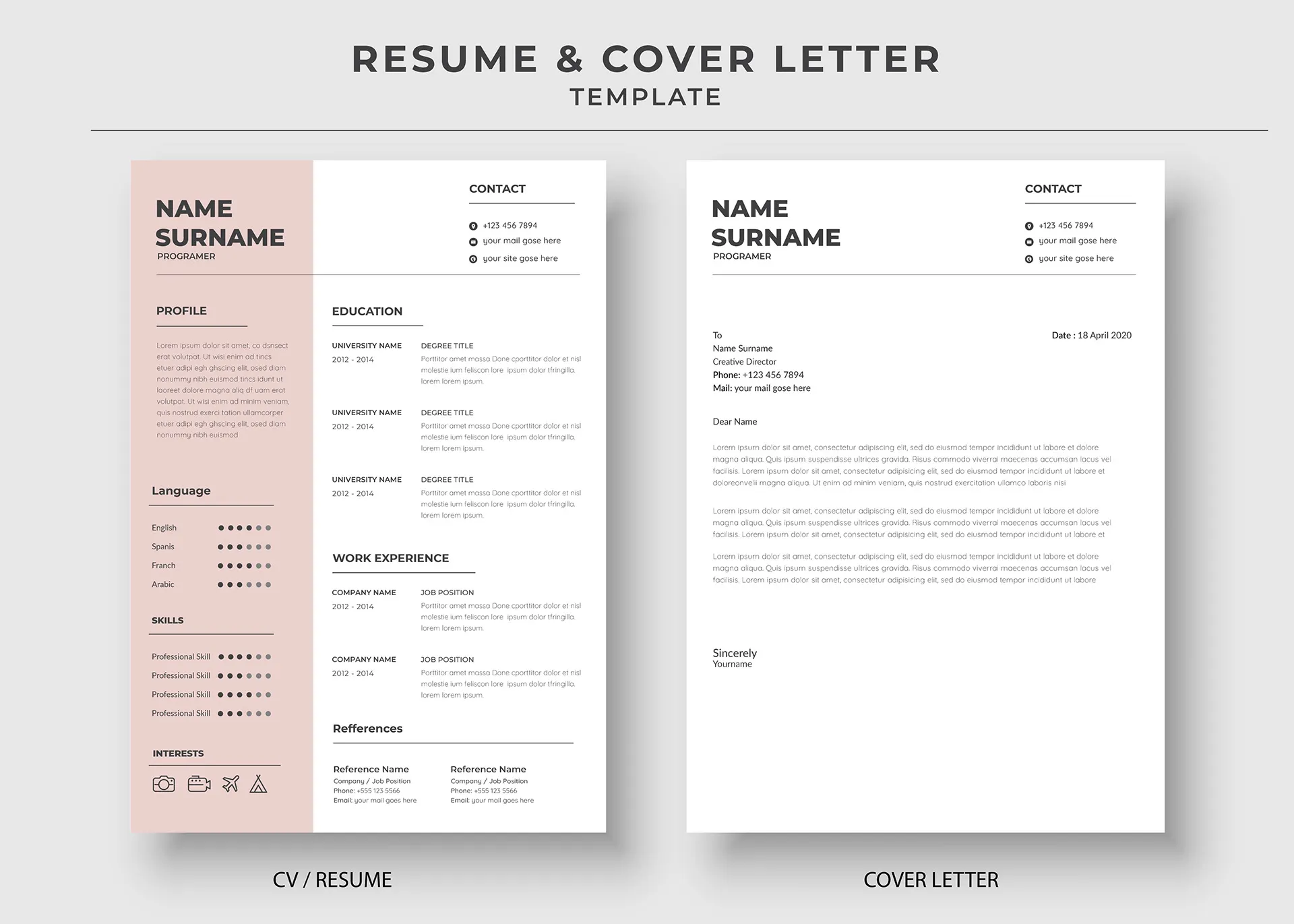
End your cover letter with a clear call to action. Specifically, request an interview to discuss your qualifications in more detail. Make it easy for the hiring manager to take the next step by clearly stating your availability and willingness to follow up. Providing your contact information again can be beneficial. A strong call to action demonstrates your confidence and eagerness to move forward in the hiring process. It encourages the hiring manager to act promptly and consider your application further.
Formatting and Design Best Practices
The formatting and design of your cover letter are as important as its content. A well-formatted cover letter is easy to read and conveys professionalism. Choose a clean and professional font, use standard margins, and maintain a consistent layout throughout. Proper formatting ensures your letter is readable and visually appealing. Poor formatting can distract the reader and undermine the message. Ensure your cover letter is visually appealing and easy to read.
Font and Readability
Select a professional and readable font, such as Times New Roman, Arial, or Calibri. Use a font size of 10-12 points for the body text. Ensure there is sufficient spacing between lines and paragraphs to enhance readability. Avoid using overly stylized or decorative fonts, which can be difficult to read. Maintain a consistent font throughout the entire cover letter to create a polished look. A clean font ensures readability. Select a font style that reflects professionalism.
Length and Structure

Keep your cover letter concise, ideally no longer than one page. Use clear and concise language, avoiding jargon and overly complex sentences. Structure your cover letter logically, with a clear introduction, body, and conclusion. Use headings and bullet points to break up long blocks of text and improve readability. Ensure that your cover letter is well-organized, making it easy for the hiring manager to quickly grasp the key information. Keep your cover letter concise. Ensure it is easy to read.
Proofreading and Editing
Proofread your cover letter carefully for any typos, grammatical errors, or inconsistencies. Use a grammar checker and spell-checker to catch any mistakes. Read your cover letter aloud to identify any awkward phrasing or sentences. Ask a friend or colleague to review your cover letter for feedback. Ensure that the tone and style of your cover letter are appropriate for the job and the company. Proofreading is very important. A well-proofread cover letter will make the best first impression.
Common Cover Letter Mistakes to Avoid
Avoiding common cover letter mistakes is essential for creating a positive impression. Pay attention to the details and proofread your letter carefully. Mistakes can negatively impact your application. By avoiding these common errors, you can significantly increase your chances of getting an interview. These mistakes can damage your chances of an interview.
Generic Content
Avoid using a generic, one-size-fits-all cover letter. Tailor your cover letter to each specific job and company. Highlight the skills and experiences most relevant to the position, and demonstrate your understanding of the company’s needs. Generic content shows a lack of effort and a lack of genuine interest. Customization will improve your chances of a call.
Typos and Grammatical Errors
Always proofread your cover letter carefully for any typos, grammatical errors, or punctuation mistakes. These errors can create a negative impression and make you appear unprofessional. Use a grammar checker and spell-checker to catch any mistakes. Ask a friend or colleague to review your cover letter for feedback before submitting it. Correct grammar is a must. Review your work carefully.
Exceeding the Recommended Length
Keep your cover letter concise and to the point, ideally no longer than one page. Hiring managers often have limited time to review applications, so it’s important to present your information efficiently. Focus on the most relevant skills and experiences. If your cover letter is too long, the hiring manager may not read the entire document. Always keep your cover letter brief and to the point. Make sure to be concise.
Cover Letter Templates and Examples
Using cover letter templates and examples can be a helpful starting point when writing your own cover letter. Templates provide a pre-formatted structure and can save you time. Examples can inspire you with different writing styles and content ideas. Tailor the templates to fit your specific needs and always customize the content. While using templates, ensure that you personalize them to reflect your skills and experience, making your application unique.
Where to Find Cover Letter Templates
Numerous online resources offer free cover letter templates in various formats. Websites like Microsoft Office, Google Docs, and professional career sites provide a wide range of templates to choose from. When using a template, select one that matches your industry and the type of job you are applying for. Customize the template with your own information and tailor it to each job application. Make sure that the template fits your needs. Use reputable resources for templates.
Examples of Effective Cover Letters
Reviewing examples of effective cover letters can provide inspiration and guidance. Look for examples that are tailored to specific industries and job roles. Pay attention to how the writers highlight their skills and experiences and how they address the employer’s needs. Analyze the structure, tone, and language used in the examples. Adapt elements that resonate with your own style and qualifications. Tailor your examples. Make sure that they fit your own needs.
Final Thoughts on Cover Letter Writing
Writing a compelling cover letter is a critical step in the job application process. It is an opportunity to showcase your personality, writing skills, and enthusiasm for the role. By following these guidelines and paying attention to the details, you can create a cover letter that effectively highlights your qualifications and increases your chances of getting an interview. Take your time. Remember to always tailor your cover letter to each specific job and company. Good luck with your job search!
